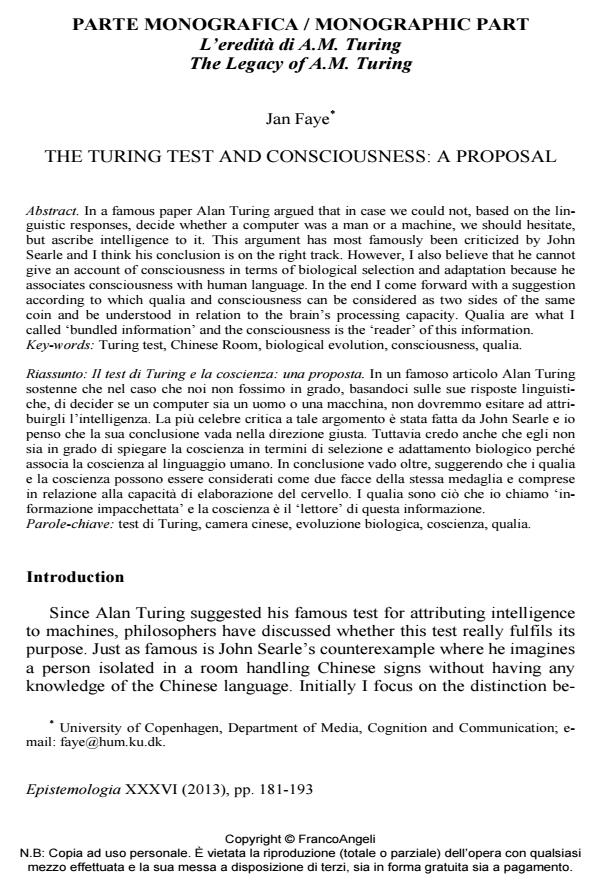The turing test and consciousness: a proposal
Journal title EPISTEMOLOGIA
Author/s Faye Jan
Publishing Year 2014 Issue 2013/2
Language English Pages 13 P. 181-193 File size 595 KB
DOI 10.3280/EPIS2013-002001
DOI is like a bar code for intellectual property: to have more infomation
click here
Below, you can see the article first page
If you want to buy this article in PDF format, you can do it, following the instructions to buy download credits

FrancoAngeli is member of Publishers International Linking Association, Inc (PILA), a not-for-profit association which run the CrossRef service enabling links to and from online scholarly content.
In a famous paper Alan Turing argued that in case we could not, based on the linguistic responses, decide whether a computer was a man or a machine, we should hesitate, but ascribe intelligence to it. This argument has most famously been criticized by John Searle and I think his conclusion is on the right track. However, I also believe that he cannot give an account of consciousness in terms of biological selection and adaptation because he associates consciousness with human language. In the end I come forward with a suggestion according to which qualia and consciousness can be considered as two sides of the same coin and be understood in relation to the brain’s processing capacity. Qualia are what I called ‘bundled information’ and the consciousness is the ‘reader’ of this information.
Keywords: Turing test, Chinese Room, biological evolution, consciousness, qualia.
Faye Jan, The turing test and consciousness: a proposal in "EPISTEMOLOGIA" 2/2013, pp 181-193, DOI: 10.3280/EPIS2013-002001